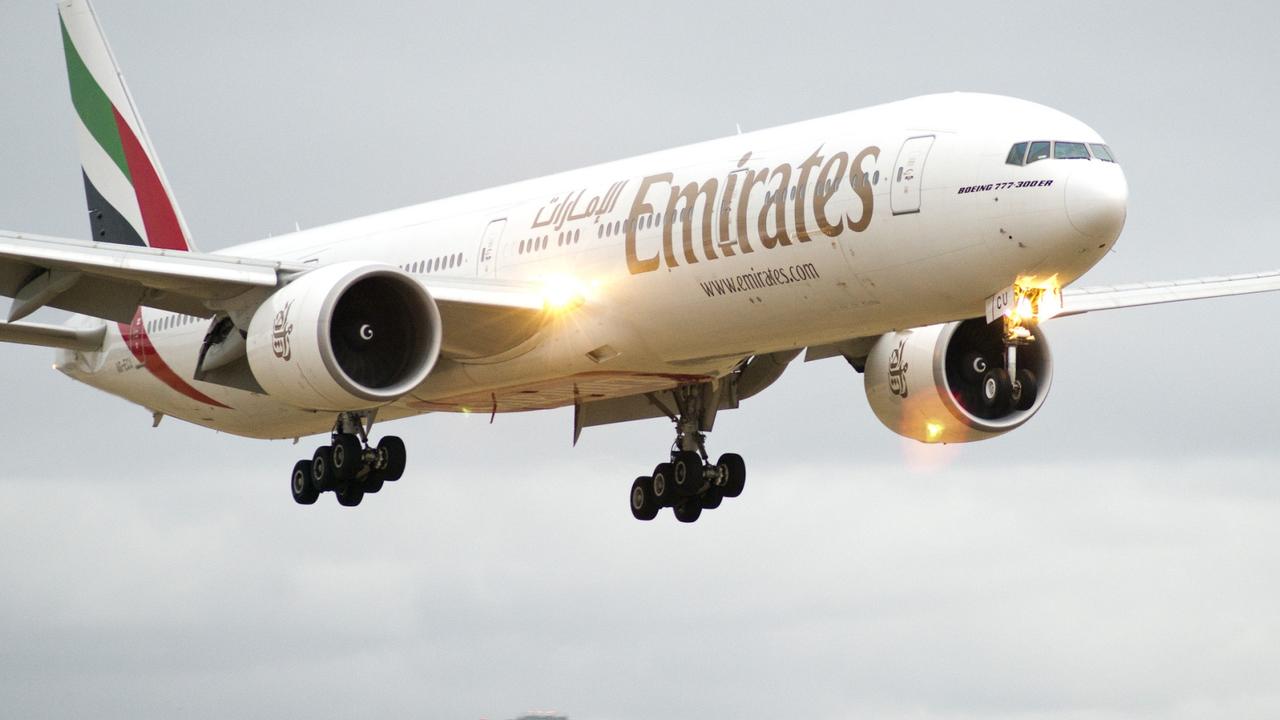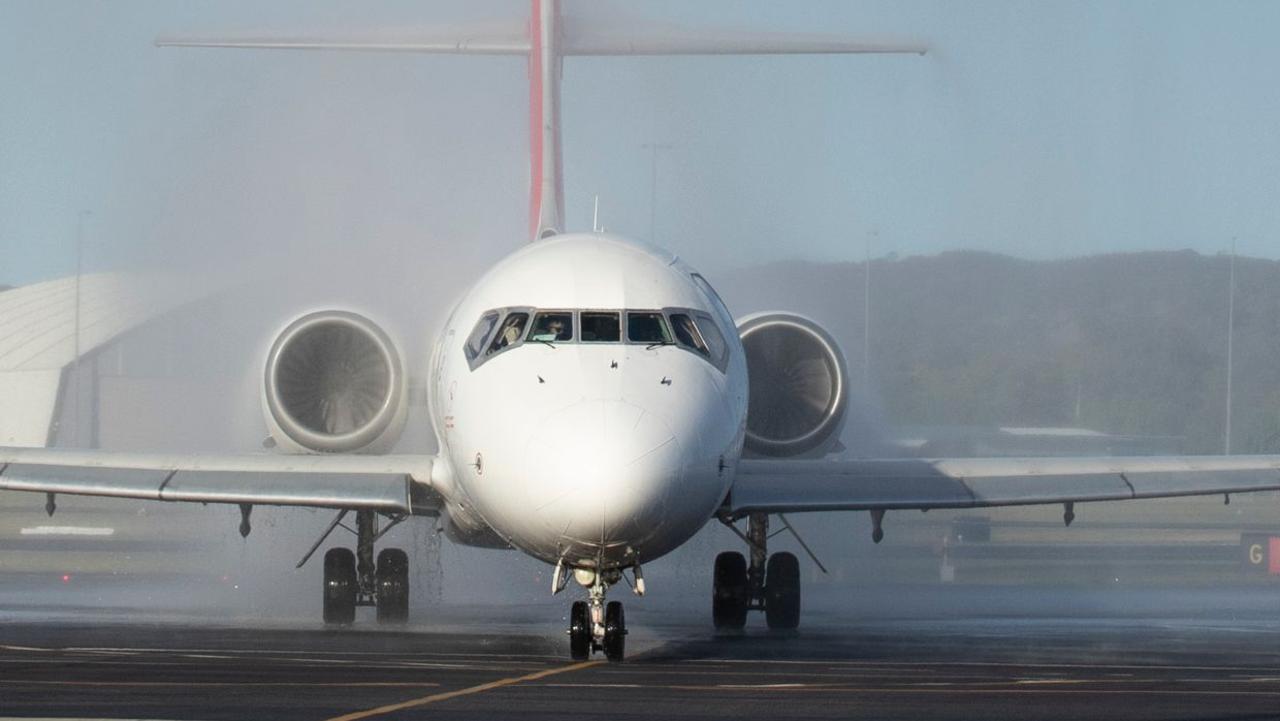What it’s like on-board Qantas’ non-stop flight from London to Sydney
Sydney and Melbourne travellers could soon be getting direct flights to London and New York – and if it happens, get ready for some big changes to economy.
I’ve just spent nearly 20 hours in the sky – and I’ve had a sneak peek at what could soon be the future of flying.
Just 52 of us – pilots and crew included – boarded a 787 Dreamliner at London’s Heathrow Airport on Thursday morning and made the 17,800 kilometre journey to Sydney without stopping.
The much-hyped private flight came hot on the heels of last month’s non-stop trial from New York to Sydney – and they’re the first two in Qantas’ three-part “Project Sunrise” series.
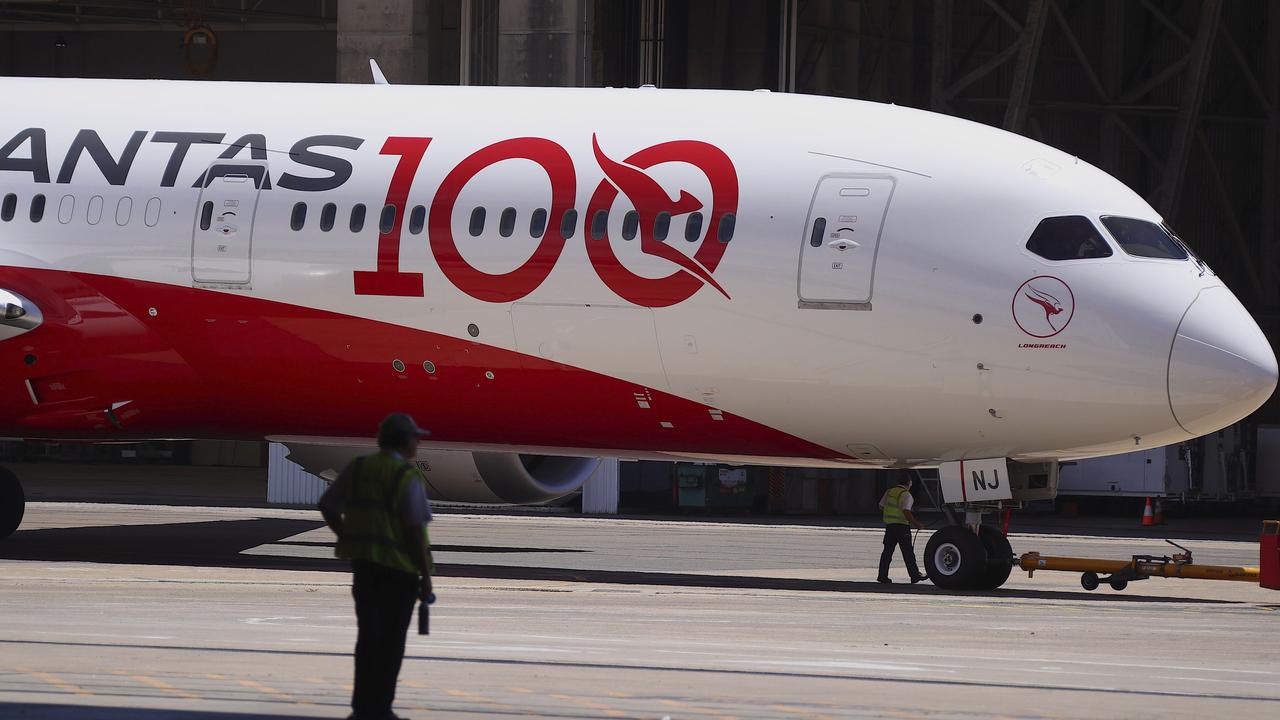
The point of these designated research flights is to trial strategies to combat jet-lag and improve overall health for passengers and crew before, during and after ultra-long haul flights.
In other words, it’s a peek into what’s likely to be on the horizon for Aussie travellers and airline staff.
Here’s how the future looks.
FLYING SCHEDULE
Nineteen and a half hours is a long time – but it felt like every minute had been accounted for.
We were told what to eat and drink, when to sleep, when to wake up, and when to move.
The truth is – it was a huge relief. Flying can be a pain – and most of the time, we feel garbage for at least a day on the other side of a long-haul trip because we’ve either under or over-slept during transit.
This time, all the guesswork was taken out of it.
Select passengers and crew were fitted with devices or given iPads with in-built surveys and “whack-a-mole”-style alertness testing games to help a team of experts monitor sleep patterns, food and drink consumption, lighting and physical movement to work out the impact on health, wellbeing and body clocks.
Some select flyers had also been asked to keep logbooks of their sleep patterns in the days leading up to and after the lengthy trip.
Meanwhile, the pilots were wearing special monitors to track brain wave patterns and check alertness.

Our flight departed London at 6am – and straight away, the huge difference between this flight and other services was obvious. My body was screaming for coffee and breakfast, but the crew switched the time zone to Sydney immediately – meaning it was now technically 5pm.
Early on in the journey, Professor Corinne Caillaud, a researcher from Sydney University, led the group in a series of stretches and exercises down the aisles of the plane to promote blood flow.
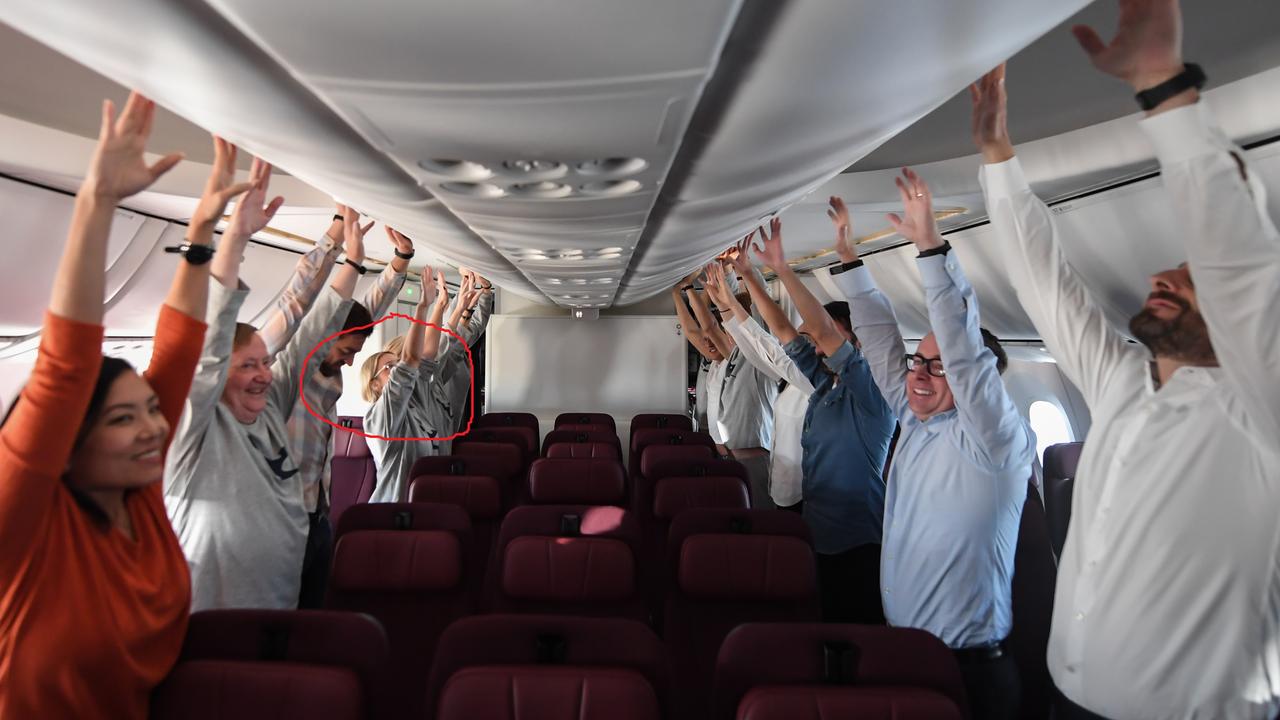
The crew dimmed the electronically-lit cabin windows to match the new time zone, and served up a carb-heavy meal of soup, a steak sandwich and a creamy raspberry trifle – all designed to make us sleepy.
By 9pm (AEDT), the lights were switched off and everyone was dozing.
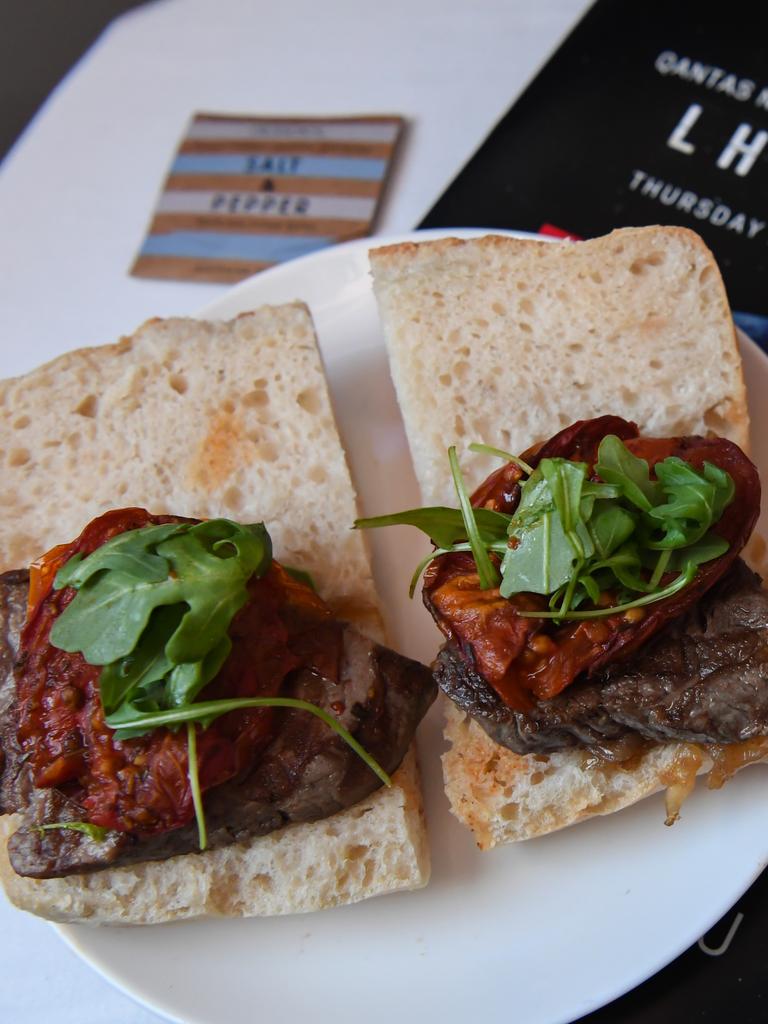
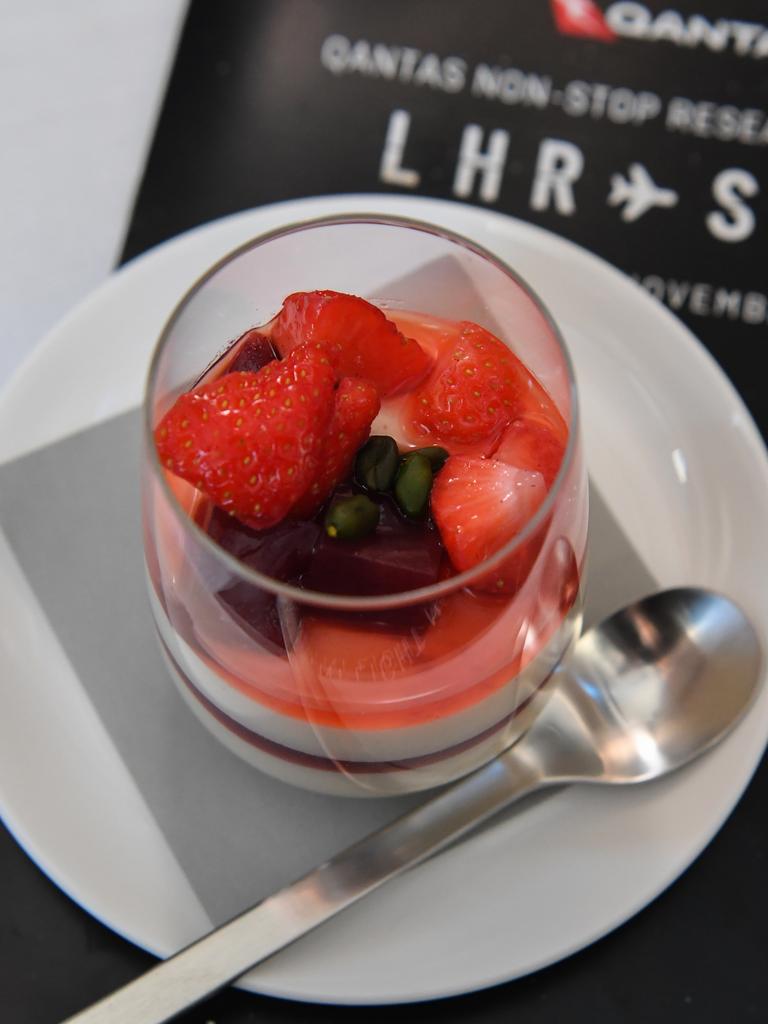
Around eight hours later, the cabin was slowly re-lit and shots of green juice and piccolo lattes were offered around as people were eased back awake.
One thing we’ll be seeing less of on these carefully curated new menus is cheese, which as Professor Caillaud explained, is part of improving people’s wellbeing after they land.
“Because it’s fermented, we’ve advised Qantas to cut back on that (for these flights),” she told news.com.au.
“We’re trying to avoid any foods that are hard to digest … You want to make digestion as good as possible, and then we’ve tried to add foods that are known to promote sleepiness or promote being awake.”

This regulated flying is something that Qantas is hoping to make the norm within the next few years.
The airline’s chief executive officer Alan Joyce told news.com.au on-board the flight the biggest marker of the success of this style of travel was on the Perth to London route, launched last year, which had the highest customer satisfaction rating of all its services.
“People are getting off the flight and they’re feeling refreshed, they’re feeling energised, and their jet lag is minimal because of the recommendations we had given them – and we want to do that with these flights,” he explained, adding Qantas was aiming to create an app to act as a guide for the duration of the trip.
“One of the ideas we have is that maybe with an app, say next Thursday you’re travelling from Sydney to London, it will beep you with an alert three days out and say ‘start doing this’, and then two days out, ‘start doing this’, one day out, ‘start doing this’,” Mr Joyce explained.
“And then another alert just before the flight, and on the flight alerts telling you what you should be doing – ‘stay awake now, fall asleep’.
“So it would become part of us managing your journey from well before your journey until when you arrive, and then when you arrive what you should do.”

ECONOMY OVERHAUL
As this was a private research flight, all passengers were required to sit at the front of the plane.
It wasn’t about reviewing the trip (I challenge you to find the person who wouldn’t enjoy 20 hours of sleeping, eating and watching movies in business class) – instead, it was about working out whether such a lengthy journey is really feasible for both passengers and crew overall.
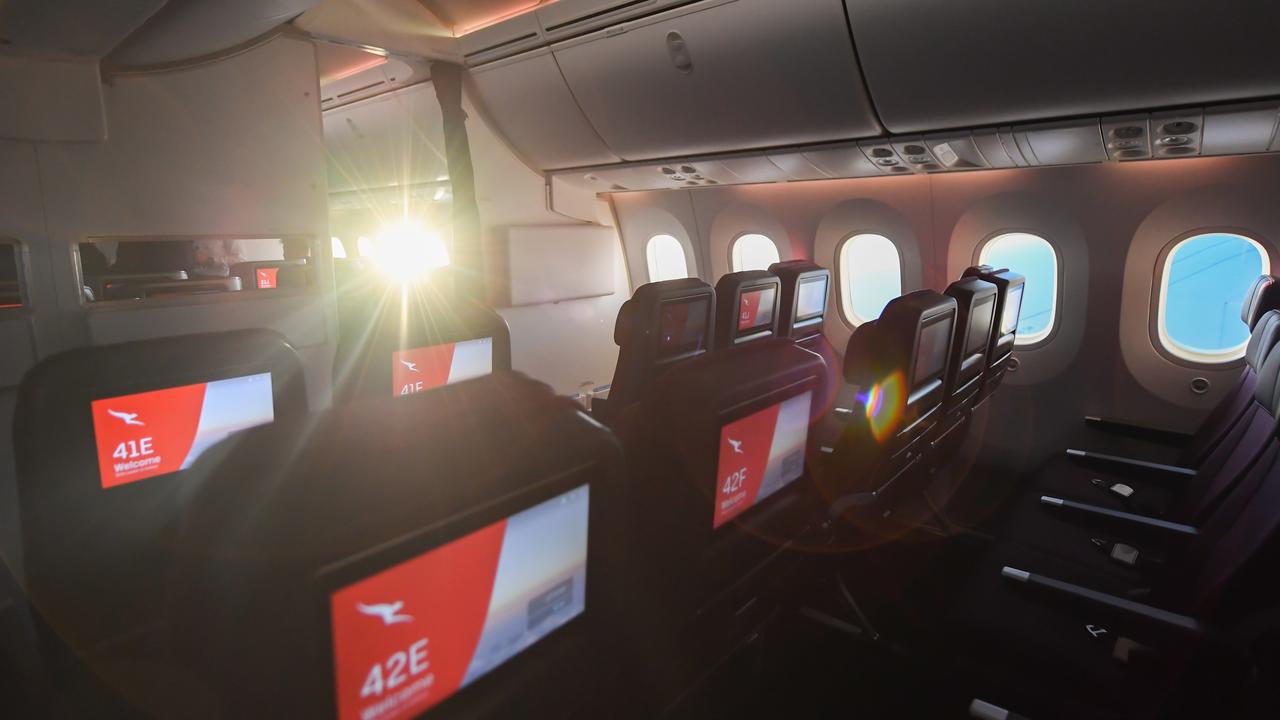
But if these flights get the green light, big changes would have to be made to economy class.
The Dreamliner aircraft that travels the 17 and a half-hour distance between Perth and London boasts the most spacious economy seat pitch in the fleet at 32 inches — and according to Mr Joyce, that’ll be made bigger if the “Sunrise” flights go ahead.
“There’ll be more space in economy – it’ll be very different from domestic, very different from what we have to Asia,” he told news.com.au.
Another significant change will be the removal of rows of economy seats to make way for a “stretching” area, featuring an exercise video and simulated roof mirroring the sky outside.
“That’s part of the proposed product for economy and premium economy, because in business and first they have plenty of space to stretch,” Mr Joyce said.
“You could fit nine or ten people in these areas at a time, they’d have the ‘sky’ to provide some light and handles from the ceiling to help with stretches.”
THE ARRIVAL
In the final couple of hours before we landed in Sydney, passengers were given another lesson in basic stretches to do in the aisles.
This happened at set times on four occasions throughout the flight – but Qantas’ researchers recommend everyone does some movements of their own every hour, for at least five minutes.
It’s around 12.30pm when we finally arrive in Sydney, and despite that translating to around 2am in London, it genuinely feels like my body clock is already set to our destination.
The early change in time zone was a key factor in helping make the adjustment, but whether or not jet lag kicks in later obviously remains to be seen.
THE DECISION
After the final research flight in December (another New York to Sydney route), Qantas will make a decision on whether or not to go ahead with the “Sunrise” flights.
Despite all the fanfare, Mr Joyce warns it is far from a done deal – and the company is facing a number of significant hurdles.
A huge factor is whether or not they could change pilot and cabin crews’ work agreement, as the ultra-long haul roster isn’t legally permitted yet. Both the regulators and unions need to agree to the proposal.
Plus, the data and feedback collected during the Project Sunrise flights needs to be reviewed, to work out the impact on passengers and any improvements that need to be made.
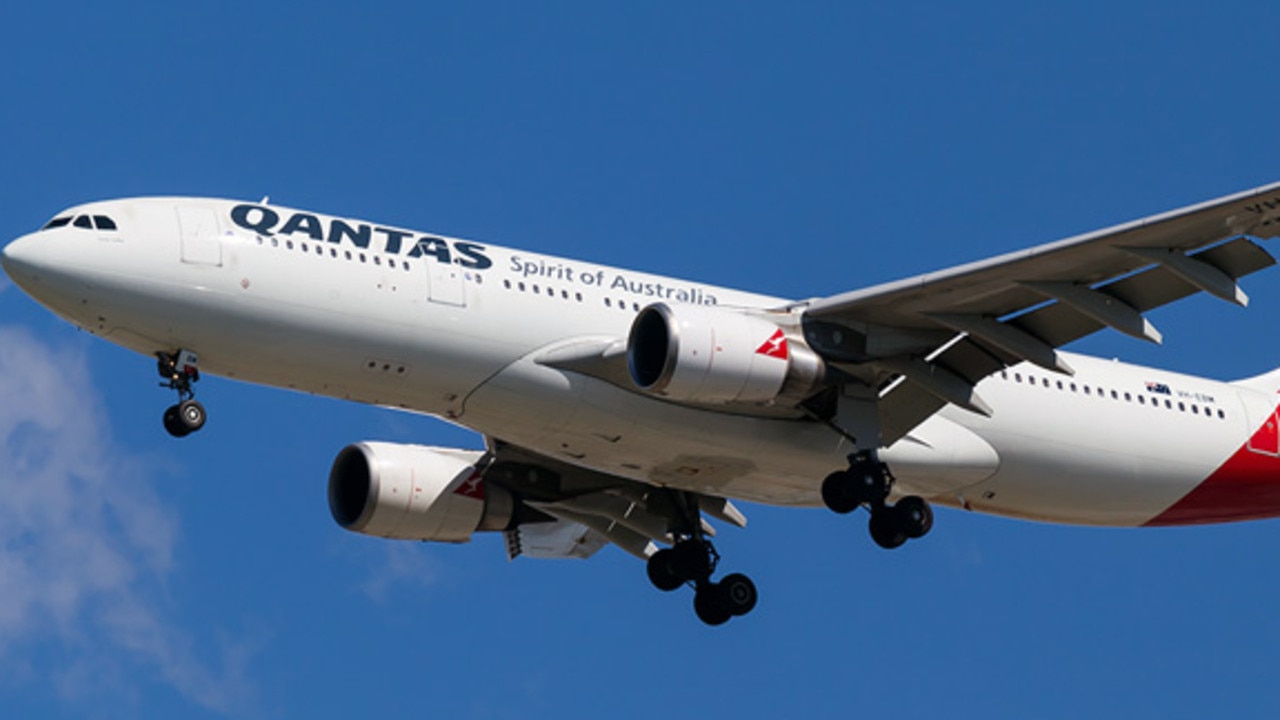
THE NEXT STEP
If Qantas decides to go ahead with the “Sunrise’” flights, they could launch as early as 2023.
And it’s not just London and New York being decided upon – the length of these journeys is comparable to a direct flight from Sydney or Melbourne to Paris or Frankfurt, which are also on the agenda, along with a non-stop service from Chicago to Sydney.
If all goes to plan, it could prove a new era in flying for Aussie travellers.
“We’re so far away from everywhere, we could actually have a significant number of aircraft that makes (ultra-long haul) commercially viable,” Mr Joyce told news.com.au.
“Whereas if you’re British Airways, you only want to fly that (ultra-long haul) distance to Australia, or America Airlines from New York to here.
“They don’t have the range of routes that we have … and that’s why we think this will be very unique.”
The writer travelled as a guest of Qantas.


